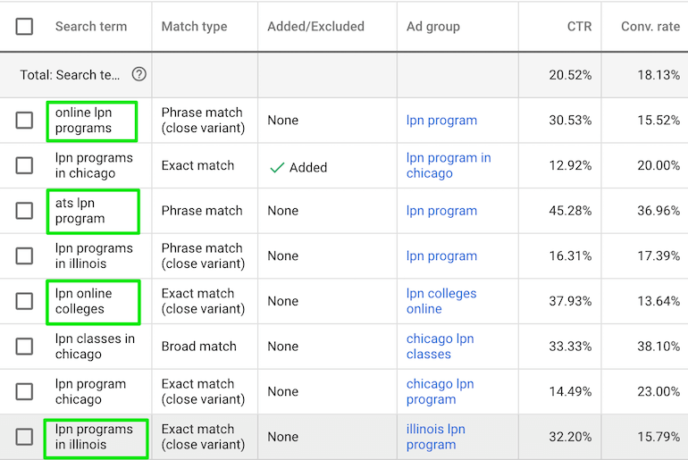[ad_1]
So, let’s say you set up killer search campaigns on Google Ads. You’re bringing in the most qualified traffic, your click-through-rate (CTR) is through the roof, your conversion rate is 30%, your boss is happy, and you are feeling pretty good.
Sure, the other 70% of your visitors left without converting. However, according to Invesp CRO, the average conversion rate in the B2B lead generation industry is 28%.
So, not to worry, right?
Well, yes and no. Why let your targeted audience convert somewhere else when you can reel them back in to further increase your ROI? Create a remarketing strategy, bring your audience back and reassure them that you are the right choice.
Now, there are several types of remarketing strategies out there. We’ll go over which ones you can use for Google Ads and YouTube. Additionally, we’ll cover some cheeky ways where you can start seeing results immediately in your campaigns. Here we go!
Google Display Remarketing
Let’s start with the most common strategy, Google Display Remarketing. We’ll pretend you have all of your display ads in the correct sizes, formats, and they’re all CRO-optimized with best practices. Additionally, you’ll need a pool of at least 100 people, and then you can move forward implementing the following tips to fully enhance your remarketing strategy.
1. Refine Targeting – Set up your campaign to only reach people who visited your pages through paid efforts and did not convert. You can target anyone who visited organically or through direct channels. However, you may lose some control over the quality of trackable traffic.
If you have successful search campaigns they will translate into your remarketing campaign in the same way. You can even make it hyper-targeted by creating a custom remarketing strategy for each search campaign you’re running, but that’s a topic for another discussion.
2. Avoid Unwanted Associations – With remarketing, you are basically following your users wherever they go as long as that website is in the GDN (Google Display Network). However, you wouldn’t want people to associate you with a specific brand or topic just because you showed up on that site, right? You can be affiliated in a good light, but not all sites are created equal.
You can find an example of this below:
Luckily, with a few quick steps you can exclude all topic and content types you don’t want to show up next to. Go to the main settings of your display campaign, click on additional settings, and under content exclusions you will see the following.
Just check the boxes of topics you do not want to be associated with!

Google RLSA
For remarketing lists for search ads (RLSA), you need a bigger pool of people (at least 1000) to start your remarketing strategy. Before you begin, keep in mind that these people came to your site, didn’t find what they were looking for and went back to searching on Google. Friendly reminder, ONLY include non-converting visitors from your paid campaigns.
Now it’s time to grab their attention for good:
1. Use Keywords With High Potential – In the RLSA campaign, your targeting will still be around keywords. We suggest using keywords from your main search campaigns that have a ratio of high CTR and low conversion rate. Why? This is because you’ve already done a good job attracting people with relevant and engaging ads (high CTR) but they’re not quite convinced yet on your product or service (low conversion rate). You just need to be there AGAIN when they go back to performing a search using the same or similar keywords.
While putting together those keywords, it’s also smart to look at the search terms that were triggered by your keywords. For example, if your core keyword was “lpn programs”, but you’re also seeing a lot of search terms for “online lpn programs” or “lpn programs chicago”, you may want to add those to your list.
Next, refine your targeting by weeding out keywords that triggered irrelevant search terms. For example, search terms that have informational intent. These words usually start with “how”, “what”, or “where”.
Below is a solid example of a search terms report with relevant terms, high CTR, and slightly lower conversion rates that would be exceptional keywords to use in an RLSA campaign.
2. Tailor Your Ad Copy – Target your audience with unique ad copy that’s different to what they’ve initially seen. Highlight your UVP (unique value proposition), specify benefits and features, and be clear on why they need to take a second look. Maybe they missed something the first time!
Additionally, this will be the time to offer a discount or a promo to stand out in the SERP (search engine results page). However, be aware of your audience. What’s going to entice them? Everyone loves a discount but remember that you are offering quality services and not “giving them away!”
Google Custom Audience (Contact List)
Google Custom Audience lets you use both search and display remarketing by uploading customer data (email, phone number, first and last name) that you’ve collected in the first-party context. For example, this can be information collected from your websites, apps, physical stores, or other situations where customers shared their information directly with you.
To use custom audiences you need to upload a list of contacts. This list size needs to be at least 1000 if you’re targeting contacts on Google Search and at least a 100 if you’re targeting them on Google Display.
Essentially, the same size requirements are in RLSA and Display Remarketing campaigns. Once you upload, Google will try its best to match your contacts with its database. Keep in mind that it does not guarantee that every contact will get matched, so you may want to upload over the minimum required amount to ensure you will have a list in place to use.
Once you have that list in Google, here is what you can do:
1. Use Broad Match Keywords – I know, I know, it’s against the biggest PPC rule of all time – “Stay AWAY from broad match keywords”. However, in this case, your audience is already narrowed down and qualified, so using broad match keywords is actually an advantage.
If you think about it, they have been qualified twice. This happened once when they shared their information, and the second time after going on Google to search a keyword for the service or the product you are offering. So, trying to qualify them a third time through specific keyword match types will only result in too low of a volume.
2. Tailor Copy to Speak to The Specific Audience – Let’s pretend that you gained your contact list through a webinar you hosted. You have your keywords and now it’s time to create your ad copy and the landing page.
Your ad copy will be a great medium for letting people know there is more information to be taken. The landing page can share the key points you covered in the webinar and connect dots on where your audience should go next.
If you’re not sure how your landing page should look like in terms of structure and functionality, here is an article to read about lead generation landing pages. If you’re not selling a product or offering a bottom of the funnel solution (BOFU) on your page, you will most likely want to drive your audience further down the marketing funnel.
Here is a good example of a landing page that does that:
It’s simple but yet visually appealing. It reminds you of the conference you attended and offers a demo video as a next step to give you more information about something that’s important for your company.
YouTube Remarketing
YouTube allows various ways to remarket to an audience. We’ll dive into one that we think aligns best with Google Ads and allows the most control over your remarketing strategy. Let’s discuss your audience selection and what ad format you should go with first.
1. Choosing an Audience – While choosing an audience for your remarketing strategy on YouTube, keep in mind that you have a short period of time to demonstrate your product or service. Therefore, it’s best to show it to people who have already had good engagement with you or are aware of what your product or service is.
This is essential as it can make that last push toward your audience choosing you over a competitor!
Below is a screenshot of two different audience types (visited three or more times and stayed on the page for more than 10 minutes) that you can use separately or together:
2. Choosing an Ad Format – Here is a list of all ad formats offered by YouTube. The formats I have experienced the most success with are skippable and display ads.
With skippable ads, your audience is able to skip the video after watching it for five seconds. Pretty straightforward, right?
You only pay if visitors watch it until the end or at least 30 seconds. These ads are beneficial for high impressions, brand awareness, and TOFU (top of the funnel) solutions. Skippable ads are also relevant if your product needs a demo video to best highlight its features and benefits.
On the other hand, with display ads, you pay per click, similar to running a display campaign. Your ad appears at the right of the feature video and above the video suggestions list. Display ads are located where they have to compete with related video thumbnails.
So, to grab attention, they need to be eye-catching! If you are able to achieve that, these ads are great for driving clicks to key landing pages.
Conclusion
Overall, creating a remarketing strategy, along with your search and display campaigns, will only strengthen your efforts. Ads are a part of our everyday lives, which may be why the marketing funnel is stretching more to guide people to exact solutions they are looking for.
So what’s next?
Check out how to add remarketing codes or create remarketing lists in Google Analytics, which you can find here.
[ad_2]
Source link








Recent Comments